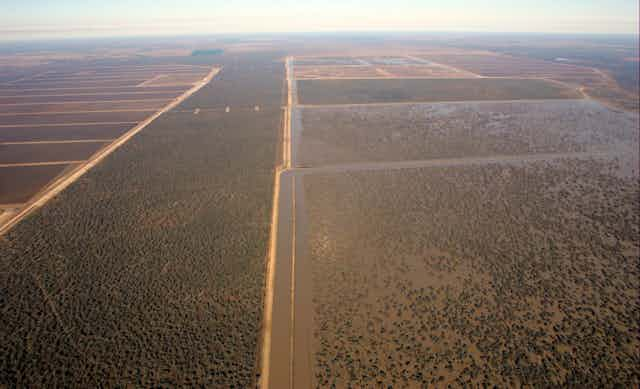Controversy surrounding the recent sale of Cubbie Station in Queensland near the New South Wales border to (mainly) Chinese interests is not unexpected. Fears about foreign ownership in Australia are long-standing and deep-seated.
While objections to foreign investment and ownership take many forms, most pervasive is the idea that Australian governments cannot control foreign entities. Local citizens and businesses are supposed to be disadvantaged. This belief betrays lack of confidence in Australian institutions and ignores the fact substantial foreign investments come within the purview of the Foreign Investments Review Board.
Foreign domination may be the lot of poor countries but is scarcely the case in Australia. Arguably, foreign firms are subject to more surveillance in Australia than local businesses, whose interests are well defended by industry organisations and networks.
To usual fears about foreign investment is added the phenomenon of “rural exceptionalism” whereby agriculture is claimed to be a special case. Different rules are said to apply to agriculture and other rural activities, ostensibly because of concerns with food security. In the case of Cubbie, there is the variant “irrigator exceptionalism”, a product of Australian faith in the social and economic benefits of irrigation. Unusually, given past lax water management involving Cubbie, the proposed sale is supposed to frustrate environmental plans for the Murray-Darling Basin.
Luckily, food security is a non-issue for Australia. According to the just released Green Paper for the proposed National Food Plan, Australia produces enough food to feed around 60 million people. Over 90% of fresh produce consumed is domestically produced. Australia’s farm sector exports more than half its production.
Almost 90% of agricultural land is entirely Australian owned and half of the remainder is at least 50% Australian owned. Similarly, just over 90% of water entitlements are entirely Australian owned.
Australia has been an importer of capital since European settlement, with waves of investment by British, European, United States and Japanese investors for a range of industries. Without this investment and migration, Australia would not have developed as rapidly. In the past, foreign ownership was essentially private. This time the concern is with ownership of land by entities with closer connections to foreign governments. Put slightly differently, the excitement over foreign ownership of agricultural land is code for Chinese and Middle Eastern ownership.
Despite some opinion, governments do not have absolute control over businesses operating in those countries. These are the countries with substantial surpluses now available for investment. It is unrealistic that Australia can ignore investment opportunities from these countries. If problems were to arise subsequently, governments would be able to deal with them.
While Australian land has attracted foreign owners since European settlement, not all investors have made good judgements. That will be true in the future. Local knowledge counts in agricultural production. The assumption is that foreign owners will make substantial profits despite failures in the past. American investments of the 1960s in Esperance in Western Australia and Humpty Doo in the Northern Territory are cases in point. The land finished up back in local ownership. In the 1980s and 1990s, there was similar angst over Japanese ownership of real estate in Queensland tourist destinations. In the event, the Japanese had their fingers burnt. Australian sellers of the assets finished way in front.
The extraordinarily variable rainfall in the northern valleys of the Murray-Darling Basin makes prospects for Cubbie problematic, in any ownership. That is why Cubbie finished up in receivership around three years ago. The administrators could not find buyers, local or foreign, until the now-reviled offer came along.
One thing is certain. Sensible Australian farmers do not object when foreigners are interested in acquiring their assets and boosting their value. As with Cubbie, few are more appreciative of foreign demand for Australian agricultural land than receivers of failed Australian ventures and their lenders, doing their best to pick up the pieces after local recklessness. Managed Investment Schemes for almonds, olives and blue gums are other examples of recklessness leading to sales to foreign investors from the last couple of years.
Foreign ownership only applies to a minute proportion of Australian agriculture, and it is subject to supervision by the Foreign Investment Review Board. Foreign ownership of agricultural land is far less significant than foreign ownership in other parts of the economy.
Playing to the crowd in the argument over foreign investment in agricultural land has been recognised by commentators such as Peter Costello, in The Age of August 15, who observed that it was a manifestation of conflicts between “the rural populists and economic rationalists in the Coalition”. Internal disagreement over agricultural policy between fundamentalists and rationalists is a long-running theme on both sides of Australian politics, and society.

